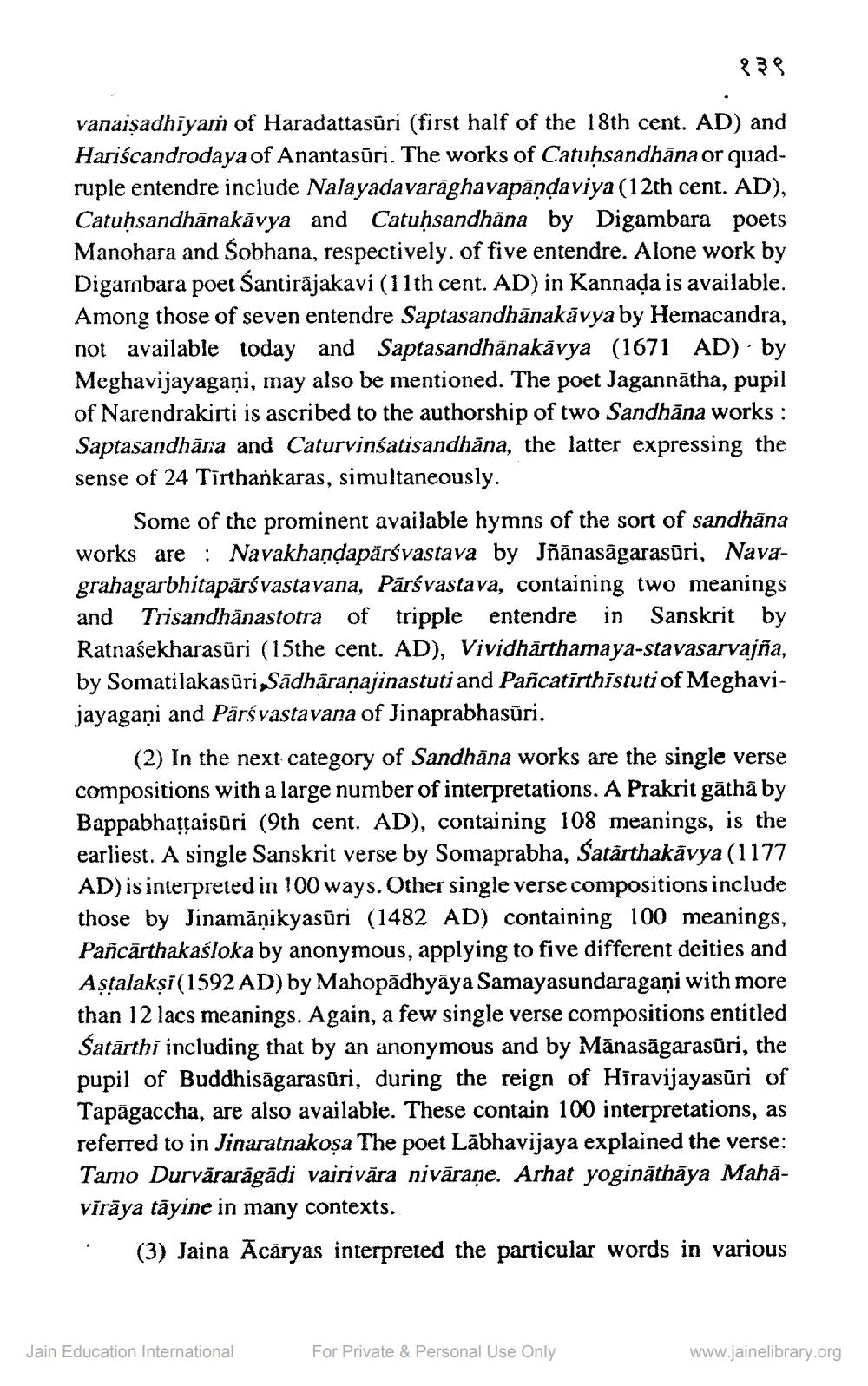________________
१३९
vanaisadhiyam of Haradattasõri (first half of the 18th cent. AD) and Hariscandrodaya of Anantasūri. The works of Catuḥsandhāna or quadruple entendre include Nalayādavarāghavapāņdaviya (12th cent. AD), Catuḥsandhānakávya and Catuḥsandhana by Digambara poets Manohara and Sobhana, respectively. of five entendre. Alone work by Digarnbara poet Santirājakavi (11th cent. AD) in Kannada is available. Among those of seven entendre Saptasandhānakāvya by Hemacandra, not available today and Saptasandhänakāvya (1671 AD) by Meghavijayagani, may also be mentioned. The poet Jagannātha, pupil of Narendrakirti is ascribed to the authorship of two Sandhāna works : Saptasandhāna and Caturvinsatisandhāna, the latter expressing the sense of 24 Tīrthankaras, simultaneously.
Some of the prominent available hymns of the sort of sandhāna works are : Navakhandapārsvastava by Jñānasāgarasūri, Navagrahagarbhitapārsvastavana, Pārsvastava, containing two meanings and Trisandhānastotra of tripple entendre in Sanskrit by Ratnasekharasüri (15the cent. AD), Vividharthamaya-stavasarvajña, by Somatilakasūri„Sādhāraṇajinastuti and Pañcatīrthistuti of Meghavijayagani and Pärśvastavana of Jinaprabhasūri.
(2) In the next category of Sandhāna works are the single verse compositions with a large number of interpretations. A Prakrit gāthā by Bappabhastaisūri (9th cent. AD), containing 108 meanings, is the earliest. A single Sanskrit verse by Somaprabha, Satârthakāvya (1177 AD) is interpreted in 100 ways. Other single verse compositions include those by Jinamāņikyasūri (1482 AD) containing 100 meanings, Pañcārthakaśloka by anonymous, applying to five different deities and Astalakṣi(1592 AD) by Mahopādhyāya Samayasundaragani with more than 12 lacs meanings. Again, a few single verse compositions entitled Satārthi including that by an anonymous and by Mānasāgarasūri, the pupil of Buddhisāgarasūri, during the reign of Hīravijayasuri of Tapāgaccha, are also available. These contain 100 interpretations, as referred to in Jinaratnakoşa The poet Lābhavijaya explained the verse: Tamo Durvărarāgādi vairivāra nivārane. Arhat yogināthāya Mahavīrāya tāyine in many contexts. . (3) Jaina Ācāryas interpreted the particular words in various
Jain Education International
For Private & Personal Use Only
www.jainelibrary.org




